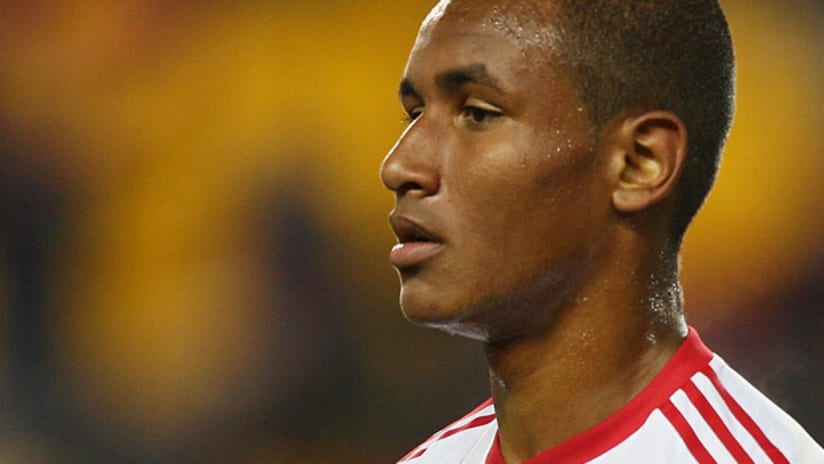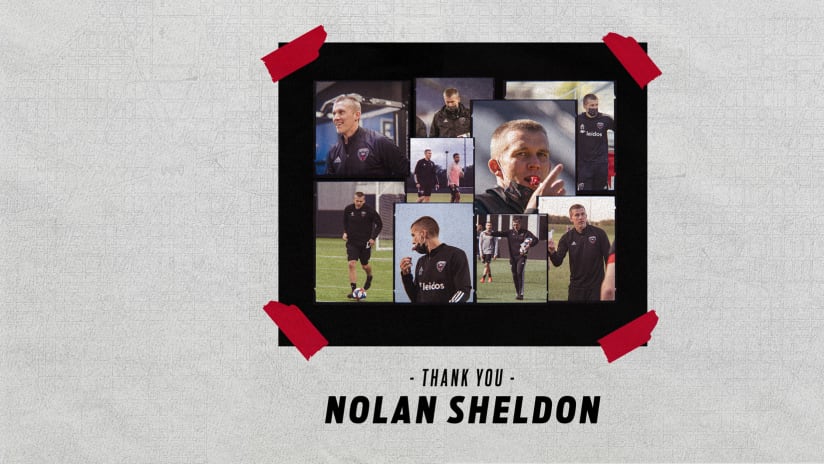Bob Bradley, it turns out, isn’t “Robo-Bob.”
The coach of the US national team has shown an admirable willingness to try different tactics, formations and talent in an effort to create a winning blend. By and large, he’s succeeded – but there’s a sense of urgency these days that didn’t really exist in the past.
That’s partially because soccer has a larger chunk of the spotlight than it did at this point even two years ago. “Landon Donovan” is a household name, The Sports Guy is writing columns about the joy of soccer for his millions of minions on ESPN.com and, of course, MLS teams are attracting larger audiences both inside the stadium and out.
But it’s also because there’s a real sense around the US camp that “We’re almost there.” The feeling is that the Yanks are poised to make the jump from Top 20 to Top 10 sometime in the next few years, and Bradley is kicking over every stone to find the right guys to bring them there.
The stones currently being kicked are a trio of MLS forwards, a Scandinavian-American attacking midfielder and a Ukrainian-American forward who literally plays his club games in Siberia.
The familiar names are Chris Wondolowski of the San Jose Earthquakes, Juan Agudelo of the New York Red Bulls, Teal Bunbury of Sporting Kansas City and Mikkel Diskerud of Stabæk in Norway. Mystery man Eugene Starikov, of FC Tom Tomsk in the Russian Premier League, rounds out the attacking corps of this particular camp.
READ: Older Nats relishing time in camp
It’s Bradley’s job to figure out if these guys can cut it at the international level and, if so, where and how they’ll fit. Which brings the exercise to a fundamental problem: No one’s really sure, at this point, what the best US formation is.
In the series of post-World Cup friendlies that have been played thus far, Bradley has clung steadfastly to the 4-4-2, the “Double 6,” as it’s called in Brazil, or the “Empty Bucket,” as it’s sometimes called here.
The results have been middling at best. A lack of coordination between the central midfielders can often leave the central defense exposed. An overreliance on hopeful balls can leave the team bereft of possession and, consequently, looks on goal.
As Jermaine Jones said after October’s 2-2 draw with Poland, the US need to learn to “play quieter.” Don’t be afraid to move backwards, or sideways, as that’s often the best way to move forward if you’re patient.
A slight adjustment for the November friendly in South Africa produced a better result with a much less experienced squad. Instead of a pure 4-4-2, Bradley switched to more of a 4-1-3-1-1 midway through the second half, a formation that featured Bunbury, Diskerud and Agudelo prominently. The reward was a more dynamic attack punctuated by a late goal from Agudelo. A US team composed mostly of reserves won 1-0 over what was more or less South Africa’s first team.
Does that mean Bradley’s going to scrap the Double 6 entirely? Probably not. He’s demonstrated his willingness to switch formations at need.
What it does is reaffirm his commitment to experimentation, as well as give an idea of how the new faces will be deployed. Agudelo and Diskerud are “attackers,” analogous to how Clint Dempsey is used at Fulham or Sacha Kljestan with Anderlecht. The idea is for them to play slightly deeper and wider than traditional forward, but higher and more pinched inside than a typical midfielder.
The result, as we saw against South Africa, was guys popping up in places that the defense wasn’t ready for and finding paths to goal that normally wouldn’t be there. Diskerud, nominally a right midfielder in Cape Town, was on the left hand side of the 18-yard box drawing defenders to him before playing the ball into Agudelo’s run for the game-winning goal. That type of interchange and positional flexibility is a hallmark of the modern game.
If that’s the goal, Wondolowski should fit right in. Attacking from non-traditional angles is what made him last year’s MLS leading scorer, primarily as a right midfielder with the Quakes. This in spite of the fact that Wondolowski is built like a center forward and is pretty good with his back to goal. He’s also pretty good facing it.
But he’s at his best running at goal without the ball, ghosting to the back post and finishing the type of chances the US regularly squander. If Wondolowski makes an impact in Red, White and Blue, it’ll be for that reason. Where he lines up — true forward? Withdrawn striker? Right midfield? — will be one of the most interesting decisions Bradley makes.
Bunbury is easier to suss out as he has both the body and skill set of a true center forward. Like Jozy Altidore, he’s able to put pressure on defenders by holding the ball and bringing other attackers into the play, then using his own native athletic gifts to create space off the ball as well. These are the skills that make room for the Agudelos and Diskeruds (or, if you prefer, the Dempseys and Donovans) to isolate their man and go hard at goal.
Bunbury also mirrors Altidore in that, at this time, he’s an iffy finisher. Even so, there’s a very good chance he starts the game as a true No. 9.
As for Starikov ... who knows? The US could certainly use a poacher, but his statistics don’t suggest that’s the type of player Starikov is (and yes, I know — lies, damned lies and statistics).
We’ll probably find out Saturday night against Chile. The US have a lot of questions at the moment, and Bradley’s shown he’s willing to go from San Jose to Siberia, and all points in between, to find the answers.
Matthew Doyle can be reached for comment at matdoyle76@gmail.com and followed at twitter.com/mls_analyst.





